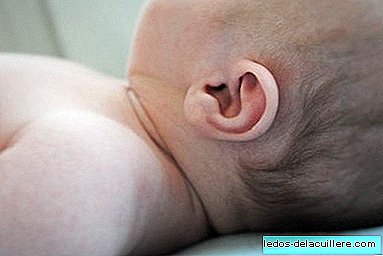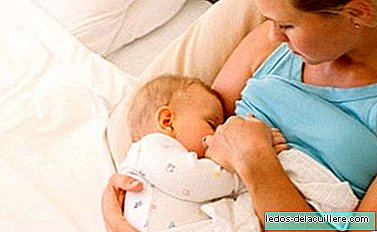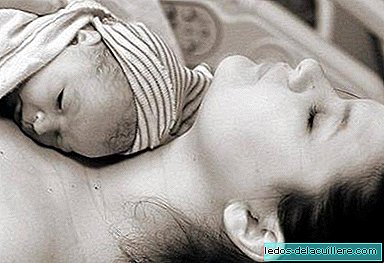
When describing the different types of hearing problems existing, we can classify them in many ways according to several criteria, such as degree of hearing loss, location of the lesion, beginning of the hearing problem or according to the type of disease.
Distinguishing between the different types of hearing impairment is essential because there are very important differences in their educational and intervention possibilities.
The aspect that differentiates between a hearing impairment with more or less serious problems is to what degree it allows a normal development of oral language; we may encounter hearing problems that hardly affect oral production and comprehension, while others make them very difficult.
Being able to distinguish them is a very important aspect if we want to know what prognosis our child can have. Let's look at the different criteria that help us differentiate different types of hearing impairments.
Degree of hearing loss
Hearing acuity is a faculty damaged to a greater or lesser extent, beginning to speak of hearing impairment when losses cause hearing to be less and less functional. To determine the degree of hearing loss are taken into account intensity and frequency. The greater the hearing loss, the greater the consequences will have on the development of language and cognitive processes. We can differentiate between:
- Slight or slight loss: hearing loss is between 20 to 40 decibels. Children with this loss capture speech and learn to speak spontaneously correctly. This degree of loss usually goes unnoticed, so it can cause, if not treated properly, learning difficulties, lack of attention and even a slight delay in speech and language. They benefit from the use of hearing aid.
- Average loss: hearing loss is between 40 and 70 decibels. Speech is perceived and language develops spontaneously, although with some problem. Failure to be treated early can cause language and speech delays, learning problems and lack of attention. They usually benefit from the use of hearing aid and speech therapy support.
- Severe loss: hearing loss is between 70 and 90 decibels. Language does not develop spontaneously. Speech hearing is not possible and the same problems occur as in middle hearing loss but more severely. The use of a hearing aid and speech therapy support is essential.
- Deep loss: hearing loss is greater than 90 decibels. In this type of hearing loss, it is impossible to perceive the language by hearing through a hearing aid, so you have to use other types of amplifiers (such as the cochlear implant). The consequences of this type of hearing loss can be very important if they are not treated quickly.
- Cophosis or total hearing loss: is given from 120 decibels and it happens rarely
Location of the lesion
This classification criterion is the most used from the medical point of view, being able to talk about hearing loss:
- Conductive or transmission: hearing impairment is due to a problem located in the outer ear or middle ear. They derive from malformations and lesions in the ear, the external auditory canal, the eardrum or the ossicles chain. They are usually transitory difficulties, since they can be recovered in a speech, medical or surgical way.
- Neurosensory or perception: hearing problems affect the inner ear and auditory nerve, hindering the transformation of the signal and its conduction to the brain. They require a very specialized treatment, as well as very specific devices, such as cochlear implants.
- Mixed: when there are conductive and neurosensory problems.

Beginning of the hearing problem
Perhaps the most important classification variable for hearing impairments is the time when hearing loss occurs. According to this criterion, we can talk about:
- Prelocutive or prelingual: hearing impairment develops before the onset of language, that is, before three years old. Within this type we can also find two types: congenital (if present from birth) or acquired (appears before language acquisition)
- Postlocutive or postlingual: hearing impairment manifests when the child has already begun to acquire oral language, that is, from three years old.
Type of disease
According to this criterion, we can find different types of hearing impairments:
- Hereditary
- Prenatal: derived from certain toxins, infections, (mainly rubella) and metabolic or other disorders that act during pregnancy, causing lesions in the auditory system of the embryo or fetus.
- Perinatals: the most frequent causes are anoxia (almost total lack of oxygen in the uterine tissue), hyperbilirubinemia (usually caused by Rh factor incompatibility) and obstetric trauma.
- Postnatal: the factors that can cause them are infections (such as meningitis, mumps or measles), ototoxic poisonings (antibiotics, salicylates or antineoplastic drugs, among others), head injuries, chronic otitis media and diseases of the inner ear.
As you can see, there are many and very diverse types of hearing problemsTherefore, to better understand the origin of any hearing deficit, it is very important to make a thorough evaluation prior to any type of intervention, in order to make it as favorable as possible for the child.
Photos | LisaW123 and willia4 on Flickr In Babies and more | I am pregnant: What could harm my baby ?, Recommend a hearing test to all newborns, Cognitive hearing deficits caused by tobacco in babies












